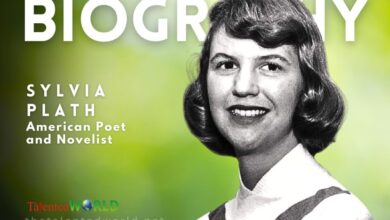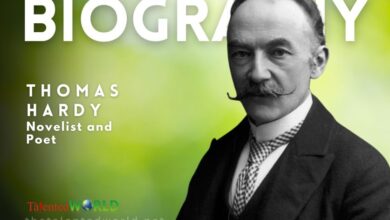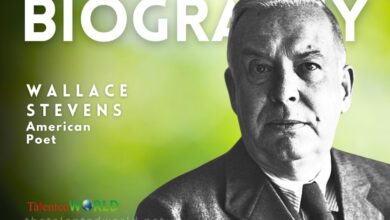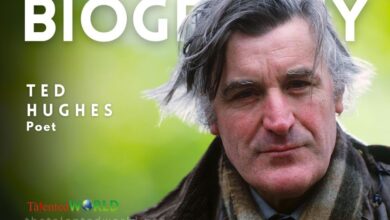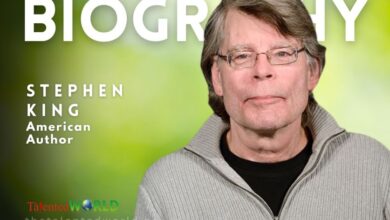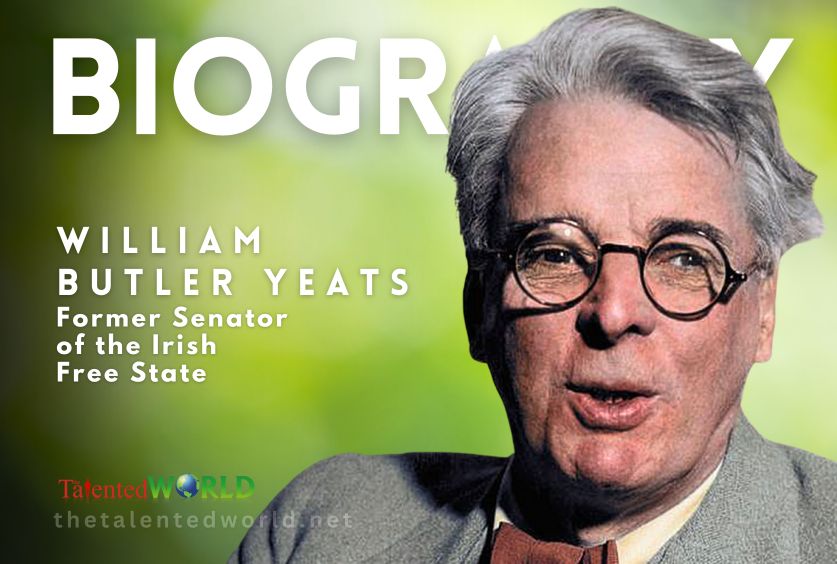
Quick Facts
| Fact | Details |
|---|---|
| Full Name | William Butler Yeats |
| Birth Date | June 13, 1865 |
| Birthplace | Sandymount, County Dublin, Ireland |
| Death Date | January 28, 1939 |
| Place of Death | Charing Cross, London, England |
| Occupation | Poet, dramatist, writer |
| Contributions | A leading figure of 20th-century literature, driving force behind the Irish Literary Revival, co-founder of the Abbey Theatre, awarded the 1923 Nobel Prize in Literature, served as a Senator of the Irish Free State |
| Literary Movement | Romanticism |
| Education | Royal Academy of Arts |
| Notable Works | “The Land of Heart’s Desire” (1894), “Cathleen ni Houlihan” (1902), “Deirdre” (1907), “The Wild Swans at Coole” (1919), “The Tower” (1928), “Last Poems and Plays” (1940) |
| Family Background | Protestant of Anglo-Irish descent; father was a portrait painter; mother came from a wealthy merchant family in Sligo |
| Early Influences | Fascinated by Irish legends and the occult; influenced by John Keats, William Wordsworth, William Blake, and the Pre-Raphaelite Brotherhood |
| Irish Literary Revival Involvement | Co-founded the Abbey Theatre with Lady Gregory; served as its chief during its early years |
| Nobel Prize in Literature | Awarded in 1923 for his inspired poetry, which in a highly artistic form gives expression to the spirit of a whole nation |
| Political Affiliation | Initially supportive of the changes in Ireland but became disillusioned with the nationalist revival; raised as a member of the Protestant Ascendancy |
| Significant Influence on Irish Identity | Explored Irish identity and nationalism in his poetry, reflecting the political and social changes in Ireland during his lifetime |
William Butler Yeats Books
| Title | Year |
|---|---|
| The Second Coming | 1920 |
| W. B. Yeats | 1989 |
| When You Are Old: Early Poems, Plays, and Fairy Tales | 2014 |
| Sailing to Byzantium | 1927 |
| A Prayer for My Daughter | 1921 |
| Aedh Wishes for the Cloths of Heaven | 1899 |
| The Wild Swans at Coole | 1917 |
| An Irish Airman Foresees His Death | 1919 |
| A Vision | 1925 |
| The Song of Wandering Aengus | – |
| Adam’s Curse | – |
| Down by the Salley Gardens | 1889 |
| The Celtic Twilight | 1893 |
| Fairy Folk Tales of Ireland | 1888 |
| Under Ben Bulben | – |
| The Winding Stair and Other Poems | 1929 |
| The Collected Poems of W.B. Yeats | 1900 |
| A Selection From the Poetry of W.B. Yeats | 1913 |
| Michael Robartes and the Dancer | 1921 |
| The Circus Animals’ Desertion | – |
| A Terrible Beauty Is Born | – |
| The Wanderings of Oisin and Other Poems | 1889 |
| Song of the Old Mother | – |
| The Secret Rose | 1897 |
| In the Seven Woods | 1903 |
| The Wind Among the Reeds | 1899 |
| Rosa Alchemica | 1896 |
| Heavens’ Embroidered Cloths: Poems by W.B. Yeats | – |
| The Ten Principal Upanishads | 1937 |
| Per Amica Silentia Lunae | 1918 |
| The Rhymers’ Club: ”Set Fools Unto Their Folly!” | – |
| Yeats’ Ireland: An Enchanted Vision | – |
| Remorse for Intemperate Speech | – |
| A Poet to His Beloved | – |
| Responsibilities and Other Poems | 1916 |
| The Countess Kathleen and Various Legends and Lyrics | 1892 |
| The Herne’s Egg | – |
| W.B. Yeats: Poems | – |
| Ideas Of Good And Evil | 1903 |
| The Moon Spun Round: W. B. Yeats for Children | – |
| Writings on Irish Folklore, Legend, and Myth | – |
| The Island of Statues: An Arcadian Faery Tale in Two Acts | 1885 |
| The Resurrection | – |
| Best-Loved Yeats | – |
| Yeats Anthology | – |

